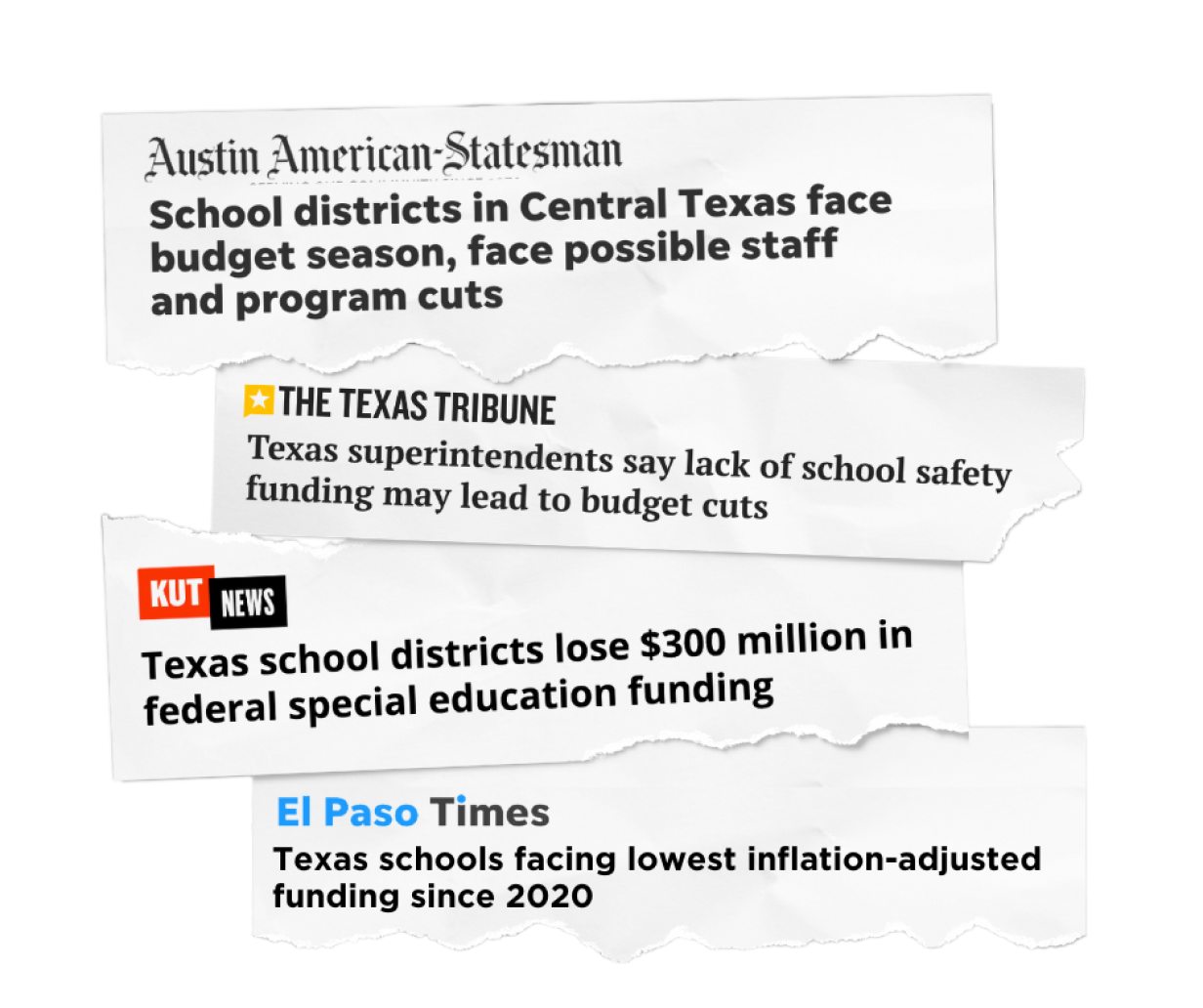In Texas, we have an equalized system, meaning that if a local school can’t generate enough tax revenue to give them what the legislature sets as the per-student funding amount, the state comes in to support it. The primary sources are local property taxes and state funds. The Texas Legislature decides how much money schools will receive to educate each student, but this amount can shrink or grow. The amount available to any school district across the state depends on the state legislature, not local school boards or superintendents.
The basic allotment is the building block Texas uses to fund students and schools, pay for teachers, as well as pay for the operations of everything that goes on within a campus and a school district. The Texas legislature arbitrarily sets this per-student amount, which has been $6,160 since 2019. Schools receive additional funding based on specific student demographics–such as special education needs, qualifying for free or reduced-price lunch, or being in the bilingual program – and district characteristics, like small or midsize districts. Local school districts add to their budgets using the money raised from local property taxes–called an M&O tax. This revenue is for operations and day-to-day expenses, such as transporting kids to and from school, keeping the lights on and the classrooms clean, and providing quality teachers.
A school district can get voter approval for another tax, an I&S–or a debt service tax–to fund new facilities and renovations. However, school districts cannot use this tax to fund day-to-day expenses.
State funds, which come from sales taxes, business taxes, and lottery proceeds, are also added. The amount of money the state contributes is directly influenced by the local property taxes generated by a school district. After the state determines the amount each district should receive, local funding is used first to try and reach that amount. If more money is needed, the state will kick in the rest. This means districts with higher property values get less state funding, while those with smaller property tax bases receive greater state support. However, the overall funding levels do not change based on the source of the money.
Considering all these different funding sources, the average school district in Texas receives about $10,000 per student per year. This figure aligns with the amount that flows to school districts for day-to-day operations. The TEA annual report may show a higher per-student amount. This figure includes additional sources such as the TEA budget, federal funds, debt service, and TRS dollars, which are not part of the day-to-day operational budget.



